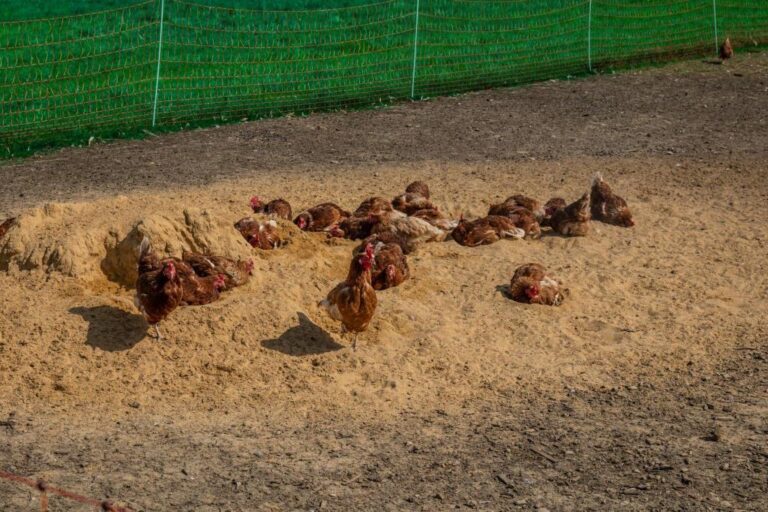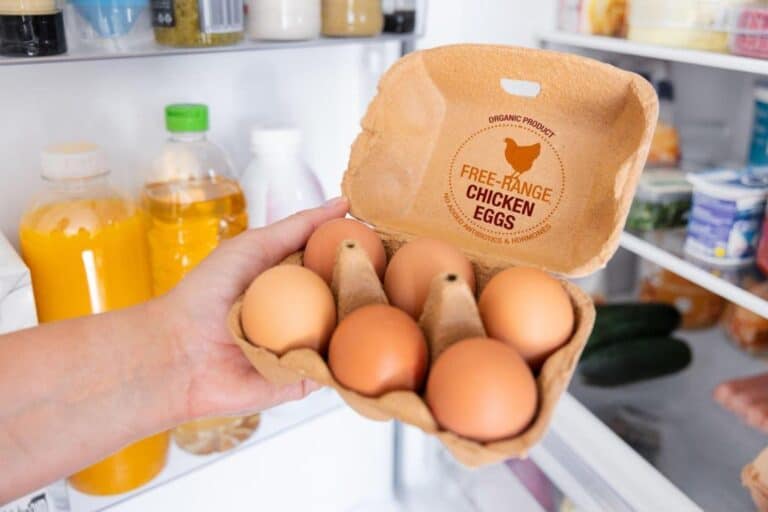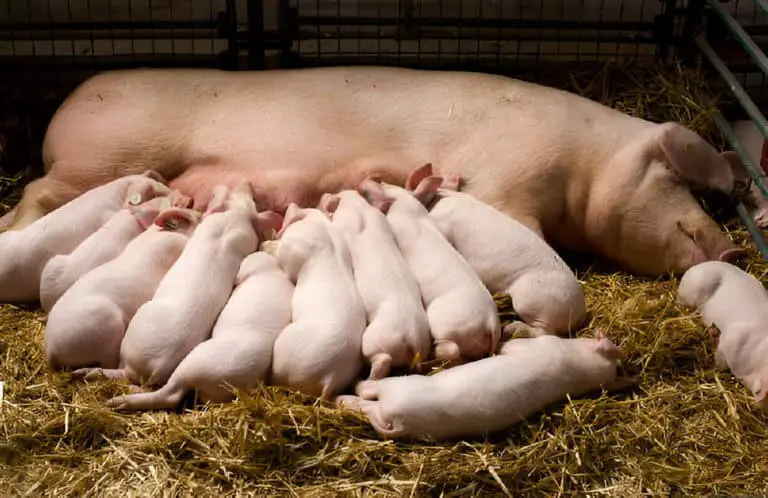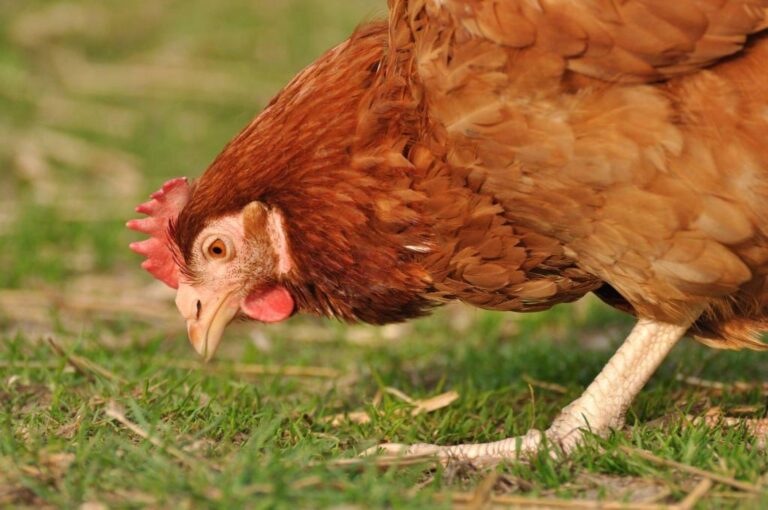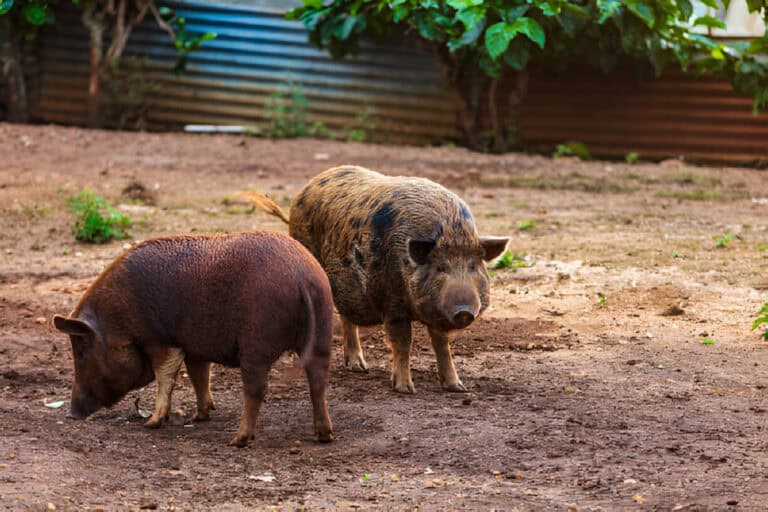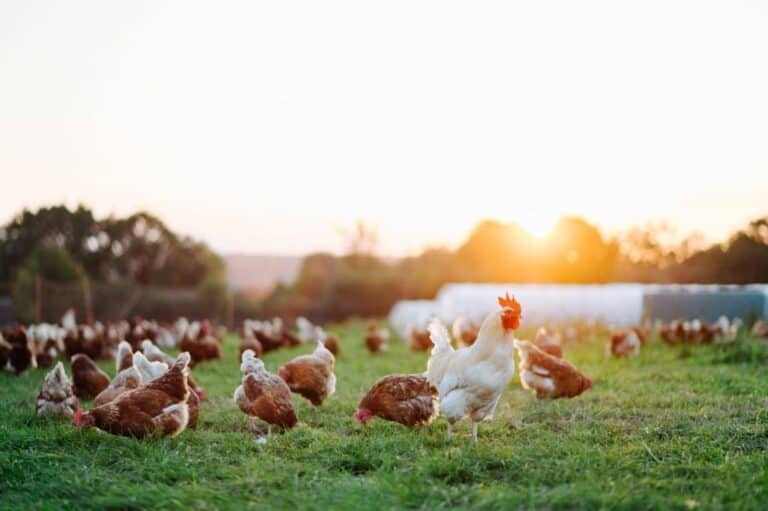Do Goat Horns Grow Back if Broken or After Disbudding?
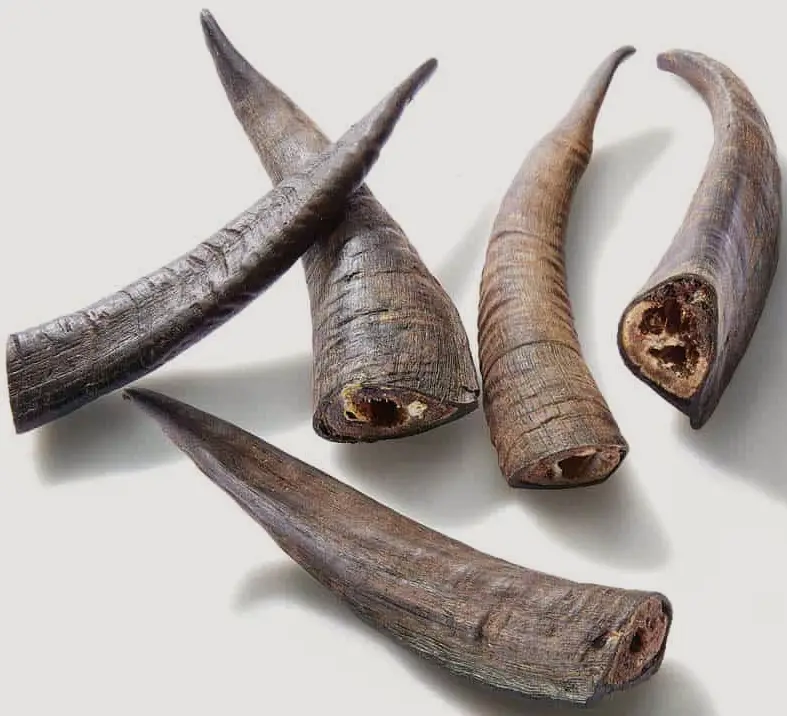
Goats are very interesting animals. They are also easy to care for. Goats are fascinating creatures, and one of the things that makes them so enchanting is their horns.
Goat’s horns play an important role in the lives of these animals. Goat horns aren’t just for decoration; they are also used as a means of defense and for communicating with other goats.
The horns of goats are used to defend themselves. Butting and ramming are how goats interact, sometimes with affection and sometimes with anger. Goat horns are indeed a natural element in the composition of most goat breeds.
But what happens if a horn is broken or after dibudding? Do goat horns grow back if broken or after disbudding? In this article, we’ll take a look at the answer to this question.
What Happens When a Goat’s Horn Breaks Off?
Goat horns play an essential role in these animals, not just for ornament. So what happens when one breaks off?
If goat horns are broken or fall off, they will regrow. Nevertheless, the horns are never the same after being broken.
In goats, the horns are formed of bone and coated in keratin to protect them from predators and their surroundings. Like antlers, they don’t shed. There is a blood supply to the bone, but there is none to the keratin.
Bone and blood vessels link the horns to the skull of a goat. If not properly cared for, these connections can cause discomfort. In the worst-case scenario, they can cause infections and other problems. When goats live in harsh regions, the best option for maintaining healthy horns is to safely dehorn the goats. This prevents harm to the goats’ heads.
Can a Goat’s Horn Fall Off?
Goat’s horns typically do not fall off by themselves – though they can be broken or removed. Goats’ horns can get caught on anything and snap off if they fight or play aggressively with them.
There are other reasons for goat horns to fall off, including old age, injury, or fighting. If a goat’s horn falls off, it will grow back, but it may not be as big or as strong as the original horn.
Goat’s horns are not shed like deer antlers, but they can be broken or removed through manual means or by a predator. When a horn is damaged, a new one will usually grow in its place.
Goat horns can also be cut off by humans for various reasons, such as selling the horns or using them in traditional medicine. They are also used in rituals and ceremonies.
What to Do if a Goat’s Horn Breaks Off?
To begin, make sure the goat is in a secure and safe place. The horns of goats often include blood vessels; therefore, they can bleed excessively. As soon as they’re bleeding too much for your comfort, you’ll have no choice but to stop the bleeding. Get aid from your local veterinarian or a licensed goat veterinarian in your area.
Make sure there are no further injuries if they aren’t bleeding, mostly in the head area. Look for bruising and wounds on the head, the legs, and the stomach. Keep an eye on the goat’s lips and nose to see whether it is drooling any blood.
In this condition, this might cause a lot more harm than good for goats that don’t get their horns surgically removed. If not treated properly, this can lead to infections and shock. The goat’s shock might lead to a lack of appetite or illness in the goat as well. Antibiotics or a trip to the veterinarian may be necessary if the wound appears infected.
Treatment for Goat Horn Breakage or Injury
So even if a wound appears to be life-threatening in appearance, it might not be as bad as you think. However, like with any other accident, immediate first aid should be provided. The goat’s discomfort can be alleviated by giving baby aspirin to the animal.
Below is some guidance on how to treat the injuries due to horn breakage based on a few injuries’ severity levels.
1. Minor Goat Horn Injury
There is no need for first aid if the horn has a broken tip that does not bleed or bleeds very little. Snip off the shattered tip, if it is still attached, and any sharp edges. Apply a blood-stop powder to quell any little bleeding that may be occurring (such powders are available at most pet and farm supply stores). If necessary, just bandage the horn’s tip to prevent infection while it heals.
2. Mild Goat Horn Injuries
Breaking the horn open and exposing the huge blood vessel within will result in bleeding. Treat it like any other wound that has opened. To stop the bleeding, apply pressure to the horn’s stump. Once the bleeding has been stopped, use a blood stop powder to help the wound clot, and then bandage the horn to keep it clean.
3. Serious Goat Horn Injury
If direct pressure fails to stop the bleeding from the goat’s broken horn, locate the pressure point below the inside corner of the goat’s eye. Apply pressure to stop the bleeding. To locate this blood vessel, gently wiggle your finger over the surrounding region. While pressing on the horn stump, hold the pressure point for five minutes.
To check for bleeding after five minutes, gently loosen the pressure on the pressure spot. If blood flow hasn’t stopped, reapply the pressure. Apply a blood-stop powder to assist clotting when the bleeding has been controlled, and then wrap the horn with a bandage.
If a goat’s horn is broken, give prompt first aid. Cover the wound until the bone grows back to prevent further injury and infection. Depending on the extent of the injury, the horn may or may not grow back.
If the wound is fresh, it should be sprayed with disinfectant, kept clean and dry, and pain relief should be given. If there is a hole, a vet should be called. Removing the horns of mature goats is not recommended, as goats have a very large frontal sinus that extends a significant way up the horn.
Do Goat Horns Grow Back if Broken?
Do goat horns grow back? For the most part, yes – though it may take time. Broken horns will typically regrow within three to six months. If the break is near the base of the horn, especially if the horn is broken off the skull and exposes the sinus cavity, it may not grow back at all.
They can only regrow if a goat is not dehorned. This can be especially bad if the goat isn’t well-cared for when it’s sick or injured. If a goat’s horn is injured at the base, it may grow at an unusual angle and require trimming.
Do Goat Horns Grow Back After Disbudding?

Horns don’t grow back once goats have been dehorned or disbudded. However, goats can grow scurs (or small bumps) in the place of their horns when they are surgically removed. In most cases, genetics play a role, but it can also happen if dehorning goats happen too late or incorrectly.
Disbudding a goat’s horns usually prevents them from regrowing. This is because disbudding iron to a child’s goats requires burning through both the skin and the horn bud. It then cuts off the blood supply to the horn buds before they can begin to grow normally, causing them to fall off.
What Is Goat Scurs? How Do You Remove Them?
If, after disbudding, the horns do grow back, they are called scurs. Scurs are the little primitive horn growths that return after being removed. Disbudding goats wrongly or disbudding them too late can lead to scurs, which are more likely to develop in goats.
Scurs can be cast off by rubbing a goat’s head against a fence or by clashing with another goat. They are typically just connected to the goat’s skin, not its skull. Scurs are more common in bucks because testosterone aids in the development of scurs.
In addition, because horns widen at the base as the child develops and male goats grow quicker, obtaining all of it might be difficult. Scurs are also more common in some goat breeds than others, with alpine goats being the most susceptible.
Scurs are normally not a reason for worry unless they are huge. However, if they break off, there might be a lot of blood. If this occurs, apply Blue-Kote to the affected area to help prevent infection and monitor the wound closely. Scurs that are particularly huge pose a risk to both goat handlers and other goats.
It is possible, as well, that a scur will begin to develop into the goat’s eye. If this is the case, your veterinarian may need to periodically remove a small portion of the scur. A broken scur should be cauterized with disbudding or taken to your veterinarian if the bleeding isn’t stopping or the damage is serious.
How Long Does It Take For Goats To Grow Horns?
Goat’s horns begin to develop as early as four days old, depending on the breed. When a baby’s goat is born, its horns are only buds of small size. Male goats’ horns develop quicker and must be disbudded sooner, while females goats horns can wait a little longer.
Goats’ horn growth rates vary depending on a variety of factors, such as breed, diet, illness, and age. In general, however, it takes anywhere from four to six months for a goat’s horns to reach their full size. Goat horns can develop to between 8 and 12 inches in length. Some breeds, such as the Nubian, tend to grow larger horns than other breeds. Additionally, younger goats tend to have shorter horns than older goats.
Why Are Goats Horns Cracking?
There are many reasons why a goat’s horns may be cracked. One reason may be that the goat has been fighting with other goats and has gotten injured.
Goats use their horns for both playful and serious headbutting. There may be something wrong with your goats’ horns if they keep headbutting each other too much. Keep a close eye on them to make sure they aren’t fighting or bullying one other.
A second reason may be that the goat has a health problem, such as a fungal infection, that is causing his horns to crack. If the horn is cracked, it may be necessary to remove it by dehorning it. This can be done using a pair of pliers or by using a band saw.
The third reason may be that the goat is old and his horns have become brittle.
Why Are Goats Horns Flaking or Peeling?
Horn flaking or peeling is a common issue in goats’ horns. In most cases, this ailment is not a sign of a more significant medical concern, although goat owners may find it disturbing.
Some farmers speculate that the horns are shedding due to a change in the diet. Others believe it’s simply a natural process as the goat ages.
Peeling horns can cause discomfort in goats and perhaps illness and harm if left untreated. Consult your veterinarian if the horns of your goat have suddenly started peeling.
Below, we will discuss some underlying conditions that can promote goat’s horns flaking or peeling.
Mineral Deficiencies
To keep their horns strong, goats need a precise combination of vitamins and minerals, including calcium, phosphorus, magnesium, and salt. Goats with peeling horns that aren’t fed mineral licks or mineral supplements may have a deficit. Give her a high-quality mineral supplement regularly.
Protein Deficiency
An outer layer of keratin protects the horn’s core of bone. The protein-rich bone coatings might begin to crumble and thin if there is a protein deficit. If you want your goat to be healthy, you should include protein composition in their diet.
New Growth
When goats are developing, their horns are prone to peeling, especially at the ends. Peeling horns is more prevalent in children during growth spurts. If the peeling is minor and does not worsen over some time, it is not something to worry about.
Goats Reaching Adulthood/Maturity
The goat’s horn is not a single entity. It consists of several materials, such as bone, cartilage, and keratin. The horn itself is very fragile. It is made up of a very thin outer layer that protects the inner core. The keratin is what gives the horn its hardness and shape. The goat’s horns grow throughout life and are shed once they reach maturity and become adult goats.
Final Thought
In conclusion, goat horns can grow back if they are broken or after disbudding, but it may take some time for them to fully regrow. It is important to note that the time frame for regrowth varies depending on the age and breed of the goat.
If you are a goat owner, please be aware of this so that you can keep an eye on your goat’s horns and make sure that they are healing properly. For this reason, it is important to consult with a veterinarian before disbudding a goat. This ensures that the procedure is performed properly and safely.
FAQs
Do goat horns grow back if broken naturally?
No, once broken, a goat’s horn won’t regrow. Horns are permanent structures, and any damage is irreversible. However, regular care and monitoring can prevent injuries that may lead to horn breakage.
Can disbudded goat horns grow back?
Disbudded goat horns won’t grow back. Disbudding is a process where horn buds are cauterized to prevent horn growth. It’s crucial to perform disbudding at a young age to ensure effectiveness.
How can I prevent goat horn injuries?
Regular monitoring, proper handling, and maintaining a goat-friendly environment help prevent horn injuries. Additionally, disbudding at a young age minimizes the risk of later horn-related issues.
Can you disbud adult goats?
Disbudding is most effective when performed on young goats, ideally within the first few weeks of life. Attempting to disbud adult goats is challenging and less humane, making it less common in practice
After disbudding, how long does it take for a goat horn to start growing back?
Goat horn regrowth after disbudding typically begins within a few weeks. The exact timeline
Do all goats have horns, and can they grow back if removed?
Not all goats have horns. Disbudding, a common practice, involves removing horn buds, and they do not grow back. Horned goats retain their horns throughout their lives.

